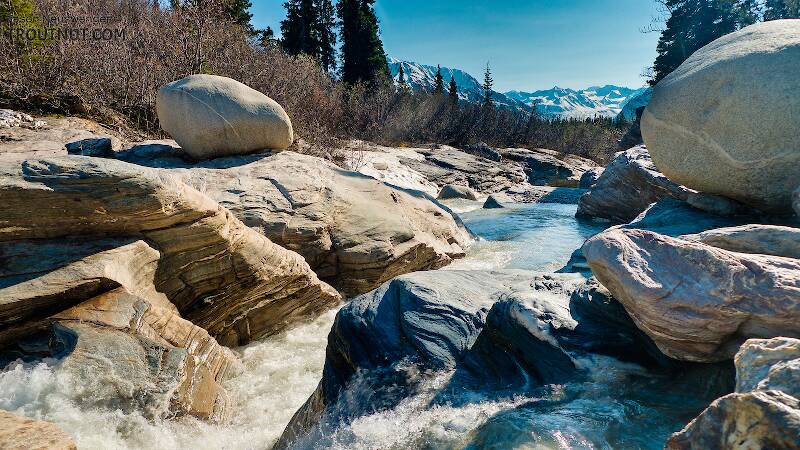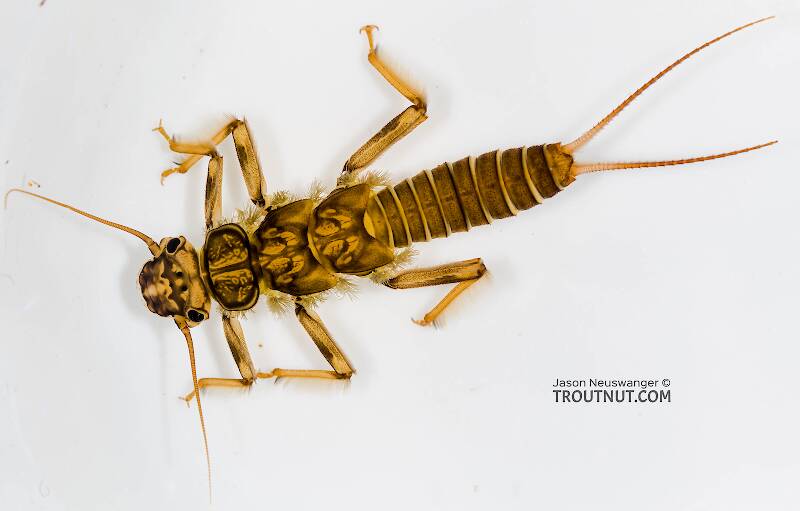Location is the greatest of these factors.
Geographic Differences
The hatch dates given on this site cover the entire range of dates reported for a given species in the major angling entomology books. Most species are unlikely to hatch throughout the entire range of dates in any particular region, let alone on a specific stretch of river. Anglers in the North can expect their hatches near the end of the published range in the spring or the beginning in the Fall. Anglers in southerly parts of the cool northern states (like those in southern Pennsylvia or the Driftless Area of southwest Wisconsin) are on the opposite end of the spectrum. Those who fish the tailwaters of the South or the mountain streams of the southern Appalachians may expect hatch dates completely outside the published range, and they should check the calendars of local fly shops or state-specific books.
Even within the same area, hatch dates vary from stream to stream because of differences in ground water, streamside vegetation, stream gradient, and other factors which influence water temperature. The headwaters of most streams average a little bit cooler than their lower reaches, and many hatches begin low in the watershed and move upstream over several days.
Western Complications
Hatch prediction is a much more difficult game in the West than in the East. The primary culprit is altitude difference, but a myriad of other factors contribute to the difficulty. Caucci and Nastasi summarize them very well in their chapter about Drunella grandis, the Western Green Drake, in Hatches II:
Unlike the predictable mayfly emergences of the Eastern and Midwestern streams, the endless mountain ranges of this vast Western country have so many intangible geological influences that hatching predictions (even from one valley to the next) can be virtually impossible. There are angling texts that stress altitude as the key for the wide scale prediction of hatching activity. We have found this criterion alone to be an unreliable factor. In reality there are many factors which determine the timing of emergence on the various rivers. Southerly exposures of high peaks, permanent glacial influences, thermal geyser activity and cold subterranian springs are only a few of the forces that will determine when water temperature will be right for hatching.
Western hatches can only be reliably predicted on a river-by-river, or sometimes even stretch-by-stretch, basis. Even then they are subject to the same conditions that shift the time of year on Eastern rivers.
Western anglers should also beware the first hot days which initiate snowmelt in the high mountains. It makes the rivers unfishably high and muddy for a while, and hatches during this period are of little use to the fisherman. This occurs sometime in May or June.
Limited Hatch Reports
Sometimes the hatch dates for a species are not known--or not reported in angling entomology books--for its entire range. When this is the case, there is a very general trend that the dates are most likely to come from these regions:
- Eastern hatches: The Catskills
- Midwestern hatches: The lower peninsula of Michigan
- Western hatches: Near Yellowstone
There are plenty of exceptions, but this is a good starting point. It's useful to know how far your region is typically offset behind or ahead of the ones above. The Adirondacks and northern New England lag 2-3 weeks behind the Catskills, for example, and northern Wisconsin and Michigan's Upper Peninsula are 1-2 weeks behind lower Michigan's schedule.
Cold Years and Warm Years
Very cold years can push the hatches to a couple weeks later; warm years may bring them a few weeks earlier. This is probably due to a combination of two factors: the dates when the water temperature finally reaches the ideal hatching temperature for the species, and the number of warm days before it which are good for nymph activity and growth. This, too, can push hatch dates outside the published range. For example, 2006 had an especially warm spring in the East and Midwest, and most of the spring and early summer hatches began at least two weeks before they were supposed to.
Good Days and Bad Days
Even during the peak time of year, some days may pass with no sign of the anticipated hatch. Sometimes the reasons are obvious, like a thunderstorm or a heat wave, but just as often we are completely baffled. There may be no hatch at all, or it may have passed unseen at an unexpected time of day.




